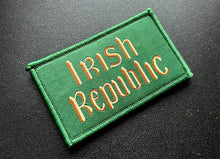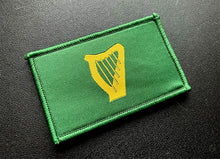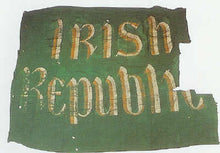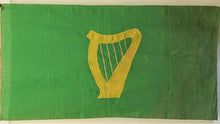The Irish Republic. Three words that over 100 years ago today, upset one of the largest empires in history. The British Parliament's Acts of Union in 1800 united the Kingdoms of Great Britain and Ireland into one: The United Kingdom of Great Britain and Ireland. These acts abolished the Irish parliament and gave the Irish people representation at the British parliament in London. Irish Nationalists vehemently opposed this move, as it would effectively end Irish home rule for almost 120 years. A continued lack of adequate political representation in London, the British governments handling of the Irish people, especially during the tragedy of the Great Famine, would stir Irish resentment of British rule, and cause three rebellions in 1803, 1848, and 1867, which all ended in failure.
The Government of Ireland Act of 1914, or the Third Home Rule Bill was enacted, and Irish Unionist protestants in Ulster, armed themselves as they opposed being ruled by a predominately Catholic people. Likewise, Irish Republicanists, or Irish Volunteers, armed themselves in support of separation and home rule. However, the implementation of the Third Home Rule Bill was postponed due to the outbreak of the First World War. At that time, it was a commonly held belief that the war would last not more than a few months, and many Irish Volunteers enlisted in the British Army. The volunteers who chose not to enlist and continued to oppose British rule believed that Britain's difficultly was their opportunity.
After war was declared, six men, Patrick Pearse, Sean Mac Diarmada, Tom Clarke, Michael Joseph O'Rahilly, Joseph Plunkett, and Bulmer Hobson planned to stage the uprising before the wars end. As the six men planned and the training of the Irish Volunteers at home increased, numerous steps were taken to keep the uprising plans a secret. The Six Men, who led the Irish Volunteers, and James Connolly, who led the Irish Citizen Army, another militia unit formed during the Dublin Lock-Out in 1914, and the Irish Republican Brotherhood, agreed the uprising would go ahead at Easter in 1916.
On the Morning of April 24, 1916, rebel forces began to muster around Central Dublin and began to seize important sites and government offices in Central Dublin before Midday, including Dublin's General Post Office. That afternoon, Patrick Pearse stood at the steps of the General Post Office, and read the Proclamation of the Irish Republic. Despite the best efforts of the Irish Volunteers, Citizen Army and Republican Brotherhood, the uprising failed to dislodge British rule over Ireland and the leaders of the uprising were executed by firing squad.
The flag, on green poppin cloth, with the words IRISH REPUBLIC painted in gold and white in the form Gaelic script, would be raised above the General Post Office where the rebels would be headquartered for the majority of uprising, until their eventual surrender to British forces.
The subsequent mass-arrests, martial law, and executions continued to fuel anti-British sentiment in Ireland, finally achieved self governance within the commonwealth in 1921, and it's Republican form in 1949. As for the flag, It was then taken as a regimental trophy by the Royal Irish Regiment and entered into the Royal Collection of King George V. It was finally returned to the Irish in 1966 on the 50th Anniversary of the Easter Rising.
The Irish Citizen Army
The Government of Ireland Act of 1914, or the Third Home Rule Bill was enacted, and Irish Unionist protestants in Ulster, armed themselves as they opposed being ruled by a predominately Catholic people. Likewise, Irish Republicanists, or Irish Volunteers, armed themselves in support of separation and home rule. Simultaneously, the Irish Citizen Army, originally formed in 1913 by Irish trade union Volunteers to protect labor demonstrations, most notably during the Lockout of 1913, began to arm themselves with Mausers smuggled in from Germany. However, the implementation of the Third Home Rule Bill was postponed due to the outbreak of the First World War. At that time, it was a commonly held belief that the war would last not more than a few months, and many Irish Volunteers enlisted in the British Army, while James Connolly and the Irish Citizen Army, saw the participation of Irishmen in a British war as unjust. The volunteers who chose not to enlist and continued to oppose British rule believed that Britain's difficultly was their opportunity.
A week prior to the beginning of the rebellion, the Irish Citizen Army hoisted a flag with a green harp on it above Liberty Hall. The flag was eventually taken down by the British after it had attacked the building. The Irish Citizen Army flag was then given to a museum in County Fermanagh. In 2016 is was presented to the Irish President to commemorate the 100 years since the Easter Rising.
- 3x2"
- Woven
- Hook Backing
- Release: 2/29/24








